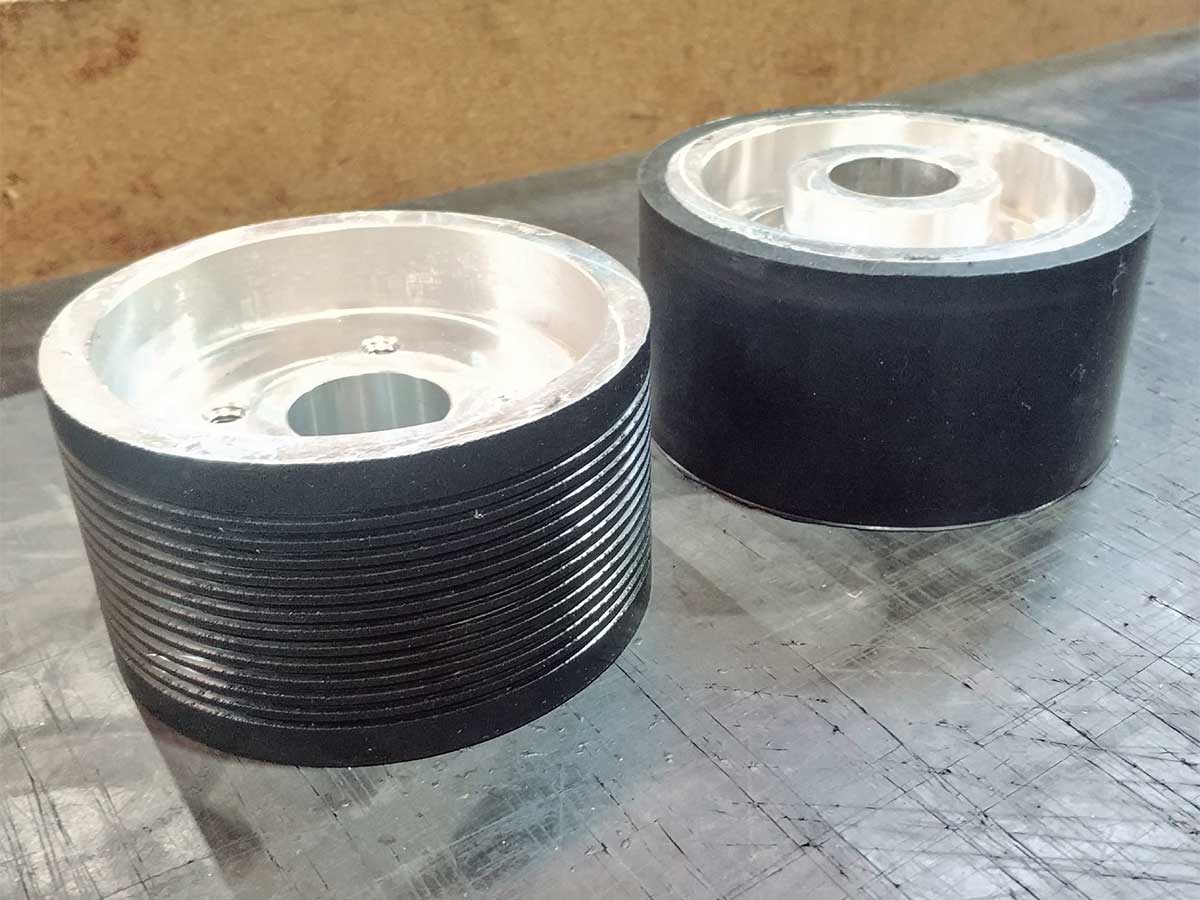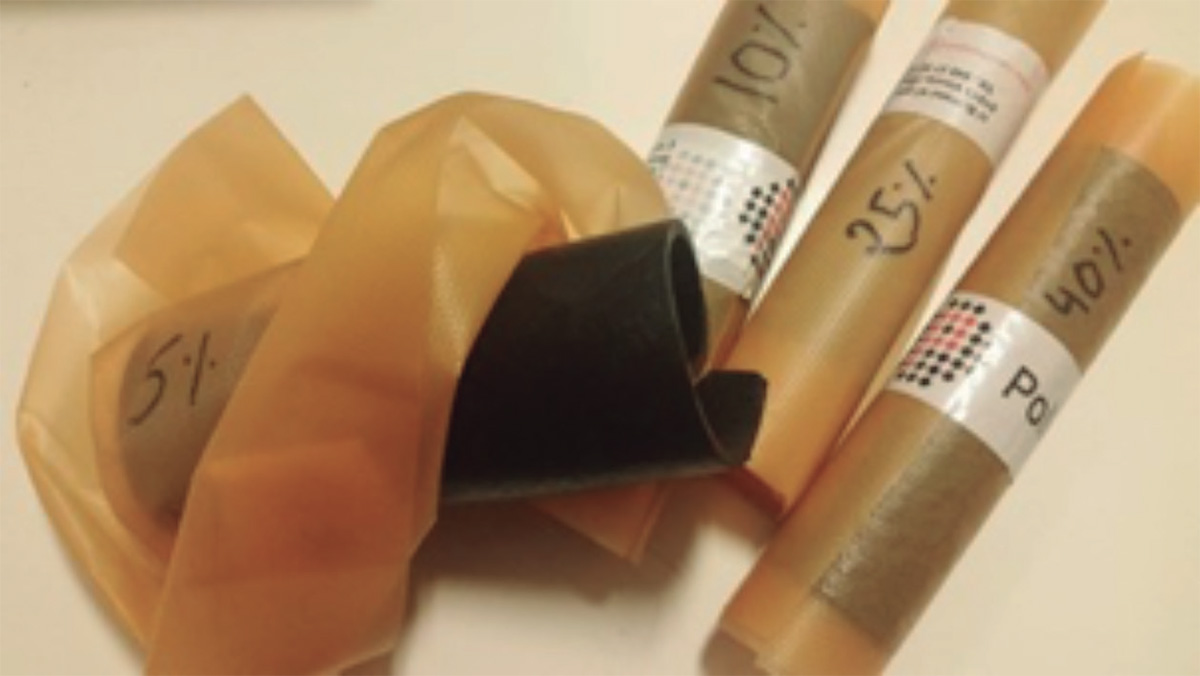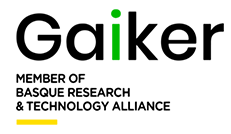GOMAZKO
INDUSTRIAL NETWORK FOR THE RUBBER SECTOR CIRCULAR ECONOMY
ITS SHAPE, SIZE, COMPOSITION AND THERMOSTABLE NATURE make it diffi cult to manage technical and industrial rubber waste, which, except for energy recovery of some streams, has no viable solution in the Basque Country. This post-industrial rubber waste does not come from tyres and it is normally generated by SMEs that produce up to 200 tonnes of waste per year in most cases. These companies lack the possibility of sorting waste into the different types of rubber families they work with, and the process becomes even more diffi cult due to the prevalence of black-coloured products. The volume of this type of waste generated in the Basque Country amounts to 2,000 tonnes per year, i.e., 20% of technical rubber waste at national level.
POLIELASTIC, a developer and manufacturer of all types of rubber compounds, has led GOMAZKO, with the collaboration of the rubber parts manufacturer VULCANIZADOS ALGOR, the waste management company ZORROZA, GAIKER Technology Centre and the circular economy specialist consultancy, ZICLA.

DRIVING FACTOR


 OBJECTIVES
OBJECTIVES
- Definir una nueva ruta de economía circular para los residuos de caucho vulcanizados industriales no procedentes de neumáticos.
- Define a new circular economy route for non-tyre industrial vulcanised rubber waste.
- Demonstrate the possibility of developing technical rubber formulations incorporating this shredded waste. It is estimated that it could reach 1,000 tonnes of potential rubber waste in the Basque Country.
 RESULTS
RESULTS
- Mapping and classification of the Basque market of rubber manufacturing and waste generating companies.
- Collection of technical and industrial rubber waste streams from 15 waste generating companies.
- Individually shredded materials are obtained from generating companies in ZORROZA, discarding those materials that could not be shredded due to technical difficulties. Individual shredded materials have been offered to their own generating companies.
- Manufacture and characterisation, in POLIELASTIC and from these materials, of 4 mixtures with 5 to 40% recycled rubber content, in standard formats for the sector, in EPDM and with the necessary technical additives in each case. The mixtures have been offered to the generating companies interested in them, giving rise to some interest among corporate clients that have provided parts manufactured with the mixtures sent.
- ALGOR obtains final parts also from these mixtures, meeting customer requirements by using up to 10% recycling in at least 25% of the company’s usual applications.
 CONCLUSIONS
CONCLUSIONS
- The industrial companies generating the waste have given different responses to the offer to incorporate their own shredded materials into their production:some producing companies are not interested or cannot incorporate them; while others would like to know their characteristics; and finally, others have requested them to run their own tests.
- The collaborative response of waste generating companies has been remarkable, and the main value of GOMAZKO is the good closure of the value chain due to its capacity to produce industrial shredding with the necessary technical characteristics in the waste collection environment and by a company that also has the necessary logistics, closing the cycle in facilities in the Basque Country and not only allowing products with a smaller footprint to be obtained, but also achieving a reduction close to 2.5% in the consumption of imported raw materials.
ENVIRONMENTAL
TECHNICAL
ECONOMIC
COMMERCIAL
ON THE MARKET




